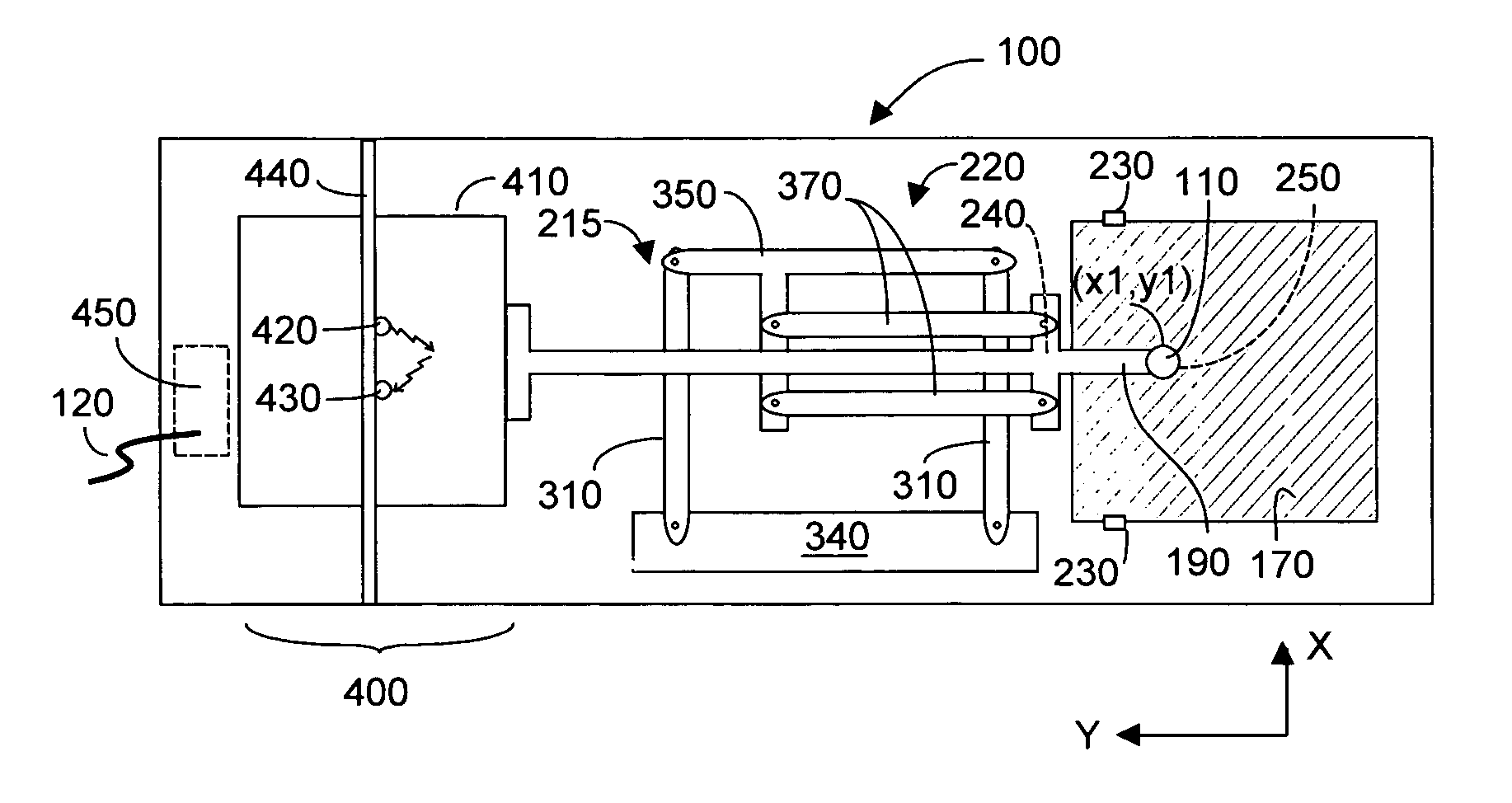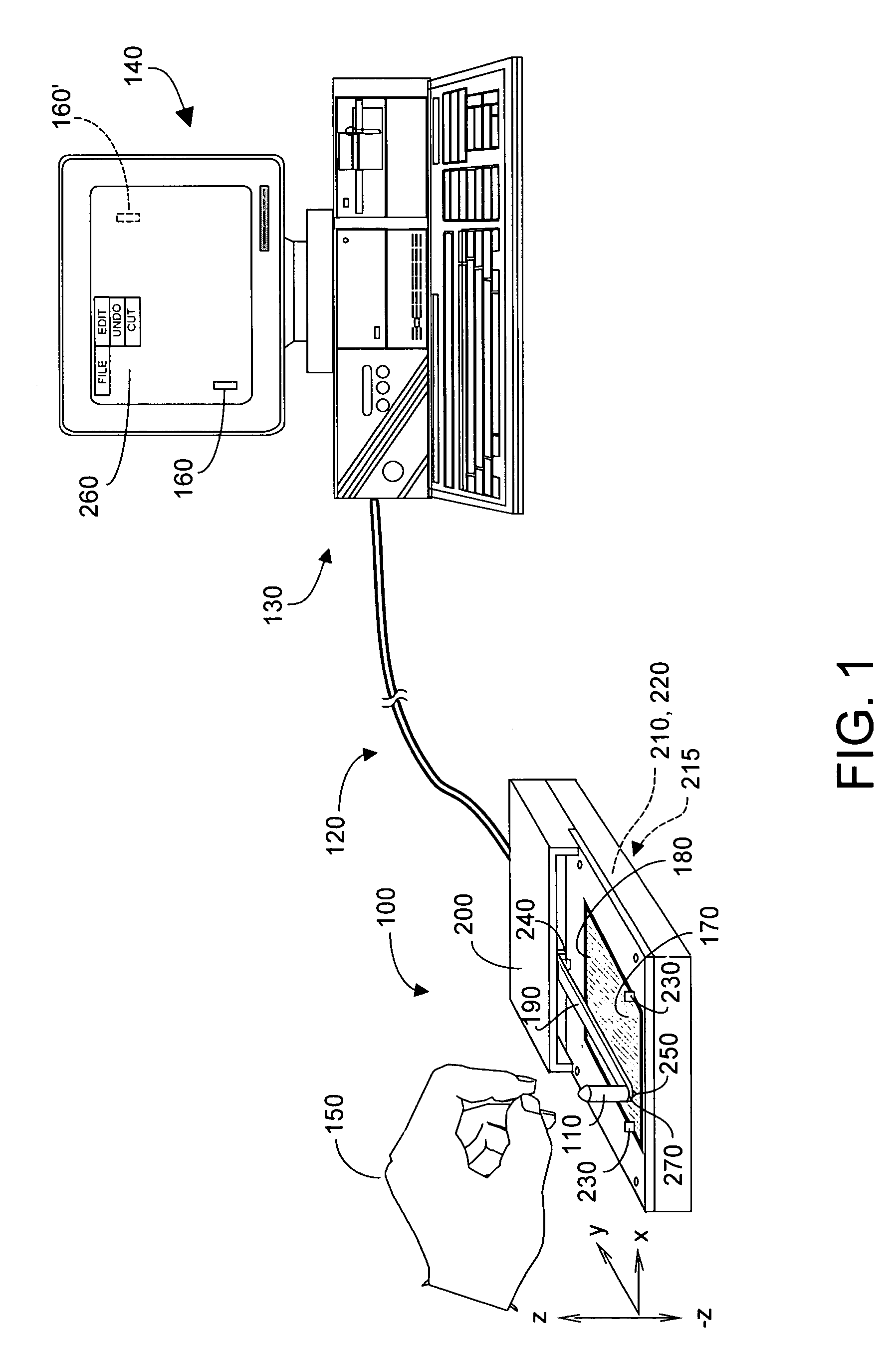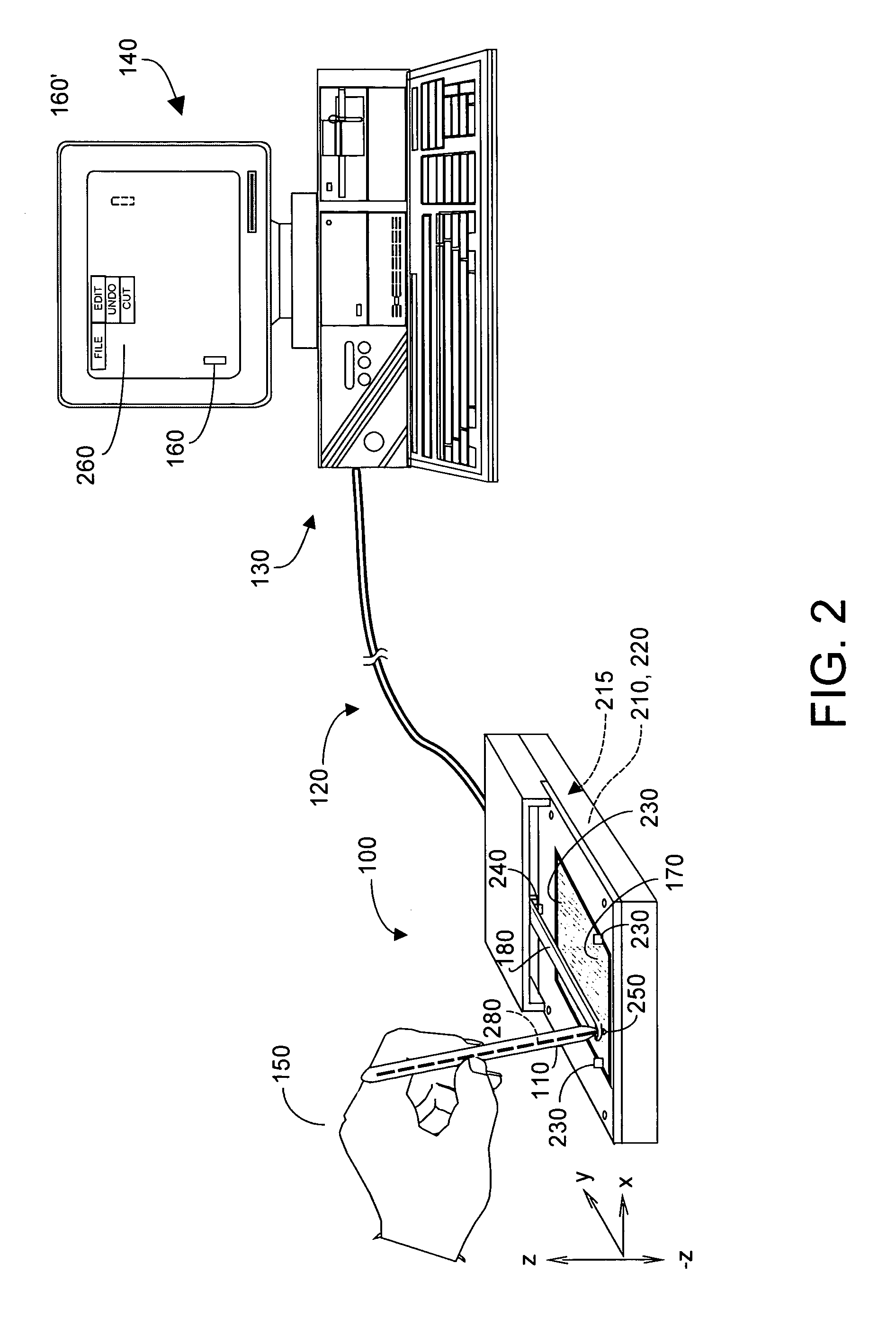Absolute coordinate, single user-interface element pointing device
a pointing device and user interface technology, applied in the field of mouselike pointing devices, can solve the problems of inability to use, inability to use, and inability to use, and achieve the effect of maximizing the accuracy of cursor pointing and reducing user fatigu
- Summary
- Abstract
- Description
- Claims
- Application Information
AI Technical Summary
Benefits of technology
Problems solved by technology
Method used
Image
Examples
Embodiment Construction
[0032]The description of the present invention commences with FIG. 6A. However it will be useful to first review the embodiments of applicant's parent application. FIG. 1 depicts an absolute coordinate pointer device 100 having a single control element 110 coupled via an interface 120 to a computer system 130 that includes a monitor or display 140. While interface 120 is depicted generically as a cable, it is to be understood that output signals from device 100 may instead be coupled to computer system 130 using infrared, radio signals, acoustic signals, among other communications media. Regardless of how the interface is implemented, output signals from device 100 will be received as input by computer system 130 in a format compatible with signals output from a generic off-the-shelf trackball and / or mouse input. It is further understood that while computer system 130 is shown as a PC-type computer, system 130 may in fact be a kiosk or other system to be controlled at least in part ...
PUM
 Login to View More
Login to View More Abstract
Description
Claims
Application Information
 Login to View More
Login to View More - R&D
- Intellectual Property
- Life Sciences
- Materials
- Tech Scout
- Unparalleled Data Quality
- Higher Quality Content
- 60% Fewer Hallucinations
Browse by: Latest US Patents, China's latest patents, Technical Efficacy Thesaurus, Application Domain, Technology Topic, Popular Technical Reports.
© 2025 PatSnap. All rights reserved.Legal|Privacy policy|Modern Slavery Act Transparency Statement|Sitemap|About US| Contact US: help@patsnap.com



